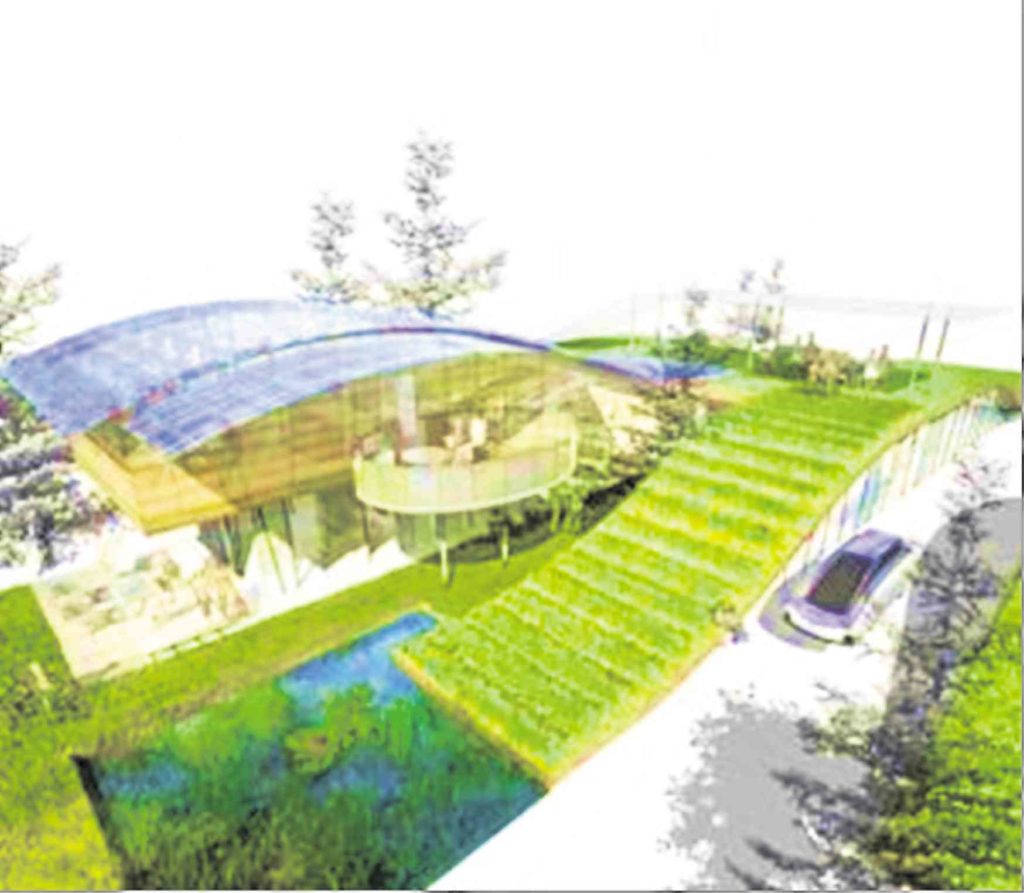What to consider when selecting building materials

The sustainable home by Ar. William McDonough + Partners uses nature as a source of inspiration and guidance. The home is designed to function like a tree. —PHOTO COURTESY OF Inhabitat.com
Are you planning to buy building materials for your home? What criteria do you use to buy building materials? Is cost your primary consideration?
When choosing materials, you will notice that the price differs widely. It is not always advisable to choose the cheapest materials mainly because in most cases, these materials are not durable. You then end up replacing them frequently and this ends up being expensive.
Choose building materials that will serve you well for a long time and this will end up being cost-efficient.
Resource efficiency
What else do you consider? The aesthetic value of the materials? What about easy installation to cut down on specialized labor and equipment costs? While these are valid reasons for selecting materials for your project, there is one major factor that you must consider—buying sustainable materials.
What are sustainable materials?
Sustainable materials are products that provide environmental, social and economic benefits while protecting public health and the environment over their whole life cycle from the time that the raw materials are extracted from the earth, to manufacturing, delivery, installation and eventual disposal.
Sustainable materials promote a more efficient use of resources such as money, materials, labor and other assets while minimizing waste and improving occupational health and safety management.
There was a time when handling resources simply meant the extraction of raw materials and their eventual use. All waste was thrown away. Today, the trend is to utilize waste and byproducts as much as possible. The buzz word for waste today is, back to the factory, or back to the earth.
This is the same idea behind the “Cradle to Cradle” concept which has been advocated by Arch. William McDonough who was recognized by Time magazine as a “Hero for the Planet.”
According to him, “Everything is a resource for something else. In nature, the ‘waste’ of one system becomes food for another. Everything can be designed to be disassembled and safely returned to the soil as biological nutrients, or re-utilized as high-quality materials for new products as technical nutrients without contamination.”
Recyclability, reuse
Recycling construction waste is now being done by many construction companies. It consists of separation and recycling of recoverable waste materials generated during construction and renovation. Proper waste recycling reduces the demand for new resources, cuts down cost and effort of transportation and production.
Locally sourced
Examples of commonly recovered construction materials include asphalt paving, construction site clearing debris, trees, gypsum boards, metals, concrete, wood, roofing, etc.
Regional materials or locally sourced materials are those produced within a certain distance from the project site.
Some standards specify building materials that are extracted, manufactured or recovered 800 kilometers from the project site. The building project may be considered green if the locally sourced materials comprise a minimum of 10 percent of the total cost of materials.
Others simply specify that the material be sourced from any of our Asean neighbors. Lower transportation fuel cost means lower carbon footprint for the materials.
Rapidly renewable
A rapidly renewable material is a material that has the capacity to regenerate itself in 10 years or less. This includes bio-based products made from plants harvested on a 10-year (or shorter) cycle.
The goal of using rapidly renewable content is to reduce the number and quantity of products made from fossil-fuel derivatives. Rapidly renewable materials include linseed, straw, cotton, wheat, sunflower, natural rubber, bamboo and cork. These feedstocks are often used in green building products, like linoleum, straw bales, cotton batt insulation, wheatboard panels, bamboo cabinetry, cork flooring, soy-based foam release agents and fabrics.
A certain percentage of say, 2.5 percent of the materials cost, must be rapidly renewable for the project for it to be considered a green project.
Recycled content
Meanwhile, recycled content refers to the portion of materials used in a product that have been diverted from the solid waste stream.
If those materials are diverted during the manufacturing process, they are being referred to as pre-consumer recycled content (sometimes referred to as post-industrial). If they are diverted after consumer use, they are post-consumer recycled content.
The author is the Principal Architect of A.P de Jesus & Associates – Green Architecture and Vice-Chairman and COO of the Philippine Green Building Initiative. For comments or inquiries, email amadodejesus@gmail.com
